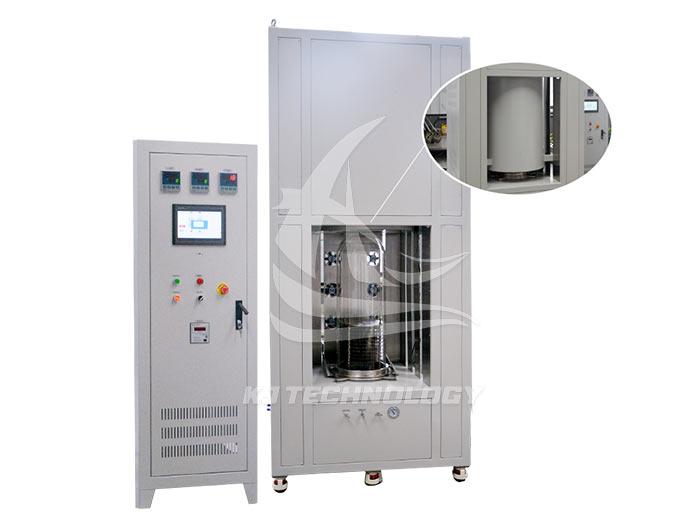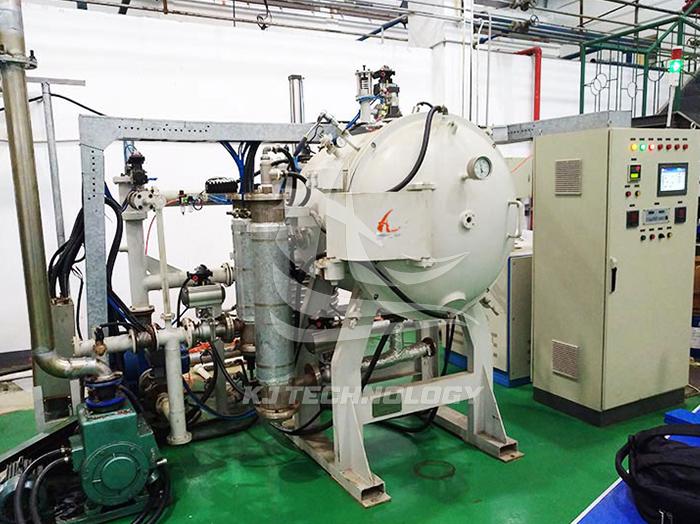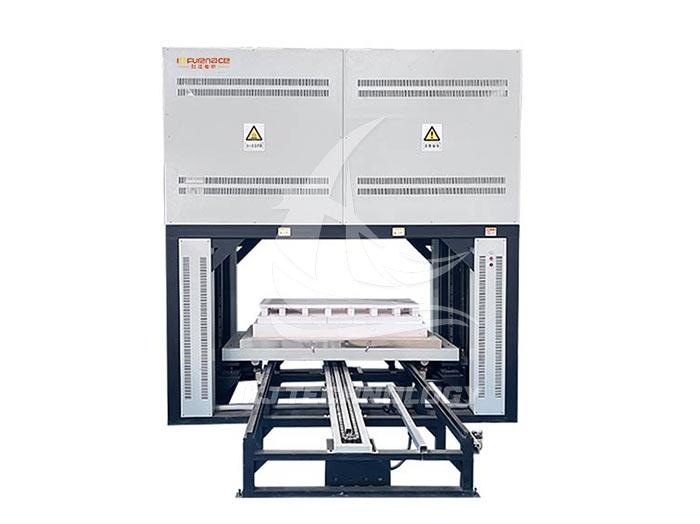What are the advantages of laboratory vacuum furnaces compared to ordinary muffle furnaces?
 06-26-2025 Author: KJ technology
06-26-2025 Author: KJ technology
The core differences between laboratory vacuum furnaces and ordinary muffle furnaces are reflected in four dimensions: atmosphere control, material properties, process accuracy, and safety. The following will directly present their advantages through comparative analysis and illustrate them with case studies and data:
1. Comparison of core advantages
Atmosphere environment: The vacuum furnace can achieve vacuum (10 ⁻⁶ Pa) or inert/reactive gas environment, completely isolating interference such as oxygen and water vapor; The muffle furnace is only suitable for air atmosphere, and the material is prone to oxidation and decarburization.
Temperature uniformity: Vacuum furnace ± 1-5 ℃ (high-precision heating element+multi-layer insulation design); Muffle furnace ± 10-20 ℃ (mainly natural convection, large temperature difference in the chamber).
Material protection: The vacuum furnace is non oxidizing and non polluting, suitable for high-value materials such as titanium alloys, semiconductors, and nanomaterials; The surface of the muffle furnace is prone to the formation of an oxide layer, leading to a decrease in performance (such as a decrease in metal hardness and an increase in ceramic brittleness).
Process flexibility: The vacuum furnace supports multi-stage program heating, atmosphere switching, and pressure control (hot press furnace); The muffle furnace only supports a fixed temperature curve and cannot adjust the atmosphere.
Energy consumption and efficiency: Vacuum furnace resistance heating+efficient insulation, reducing energy consumption by 30% -50%; The muffle furnace has high energy consumption and a heating rate of about 10 ℃/min.
Safety: Vacuum furnace enclosed chamber+multiple alarms (overheating, gas leakage, abnormal water pressure), outer wall temperature ≤ 40 ℃, open or semi open structure; The risk of high-temperature burns in muffle furnaces is high, and there is no gas leakage protection.
2. Key Advantage Analysis
a. Atmosphere control: Avoid material oxidation and pollution
Vacuum environment: Under a vacuum of 10 ⁻ Pa, the thickness of the metal surface oxide layer can be controlled at<1 nm (ordinary muffle furnace oxide layer thickness>100 nm).
Case: In the annealing experiment of titanium alloy, the tensile strength of the sample treated in vacuum furnace increased by 25%, and the elongation rate increased by 40%.
Inert gas protection: Sintering ceramics in Ar gas (purity 99.999%) reduces the porosity from 8% in a regular muffle furnace to 1.5%.
b. Temperature uniformity: ensuring material consistency
Vacuum furnace: adopts three zone independent temperature control+graphite/silicon carbide heating elements, with a temperature difference of ≤ ± 3 ℃ in the chamber (such as 1200 ℃).
Muffle furnace: single zone heating+natural convection, the temperature difference in the chamber can reach ± 15 ℃ (such as at 1000 ℃), resulting in uneven material properties.
Data: A laboratory comparison shows that the standard deviation of hardness for 316L stainless steel samples processed in a vacuum furnace is 1.2 HV, while in a muffle furnace it is 5.8 HV.
c. Material properties: Breaking through the limits of traditional craftsmanship
High density and low defect:
The density of WC Co hard alloy sintered by vacuum hot pressing reaches 99.5% of the theoretical value (only 95% in muffle furnace), and the wear resistance is increased by three times.
Special phase change control:
When preparing graphene under vacuum, the number of layers is controllable (1-10 layers), while the number of layers is uncontrollable due to oxidation in the muffle furnace.
d. Process efficiency: Shorten cycles and reduce costs
Rapid temperature rise and fall:
It only takes 15 minutes for the vacuum induction furnace to heat up to 1600 ℃ (2 hours for the muffle furnace), and the cooling time is reduced by 50%.
Energy consumption comparison:
The energy consumption of a single vacuum furnace is about 15 kWh (processing 1 kg of sample), while that of a muffle furnace is about 30 kWh.
e. Safety: Reduce operational risks
Vacuum furnace:
Double layer water-cooled structure, outer wall temperature ≤ 40 ℃;
Equipped with vacuum leak alarm and hydrogen concentration monitoring (if using H ₂).
Ma Fulu:
Open furnace door, prone to burns during high temperature operation;
No gas leakage protection, there is a risk of explosion (such as hydrogen reduction experiments).
3. Application scenarios and cost-effectiveness
Applicable scenarios
Research and development of high-value materials (such as semiconductors, aerospace alloys, biomedical materials);
Strict anaerobic/pollution-free environment experiments are required (such as nanomaterials, catalytic materials).
Optional muffle furnace:
Low precision and low-cost experiments (such as ordinary ceramic sintering and ore analysis), but subject to performance degradation.
4. Summary and Recommendation
a. Summary of core advantages
Material protection: No oxidation, no pollution, suitable for high-value materials;
Process accuracy: High temperature uniformity, supporting complex atmosphere and pressure control;
Efficiency and safety: rapid temperature rise and fall, low energy consumption, and multiple protective designs.
b. Selection suggestions
Limited budget:
Choose domestic mid-range vacuum furnaces (such as Hefei Kejing and Beijing Huaxiang) to meet basic heat treatment needs;
c. Avoiding pitfalls guide
Avoid choosing a muffle furnace to process high-value materials due to initial costs, as this may result in experimental failure due to oxidation and uneven performance;
Prioritize selecting manufacturers that can provide sample services to verify the compatibility between equipment and processes.
Through the above comparison, laboratory vacuum furnaces have significant advantages in material research and high-end manufacturing, especially suitable for scenarios with strict requirements for performance, consistency, and safety. If the budget allows, it is recommended to prioritize investing in vacuum furnaces to enhance long-term competitiveness.








